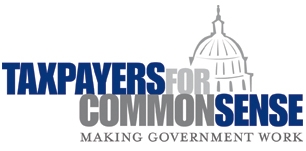Earlier this year, the Bureau of Land Management proposed new regulations for royalty collection from oil shale leases on public lands. Revenue from the collection of rents, royalties, and bonus bids represent one of the largest non-tax income sources for the federal government. Below are the public comments Taxpayers for Common Sense submitted.
|
Director Attention: 1004-AE28 Re: Comments on Proposed Oil Shale Management Regulations Dear Director: Taxpayers for Common Sense (TCS) is a national, non-partisan budget watchdog organization. Our mission is to achieve a government that spends taxpayer dollars responsibly and operates within its means. Since 1995, TCS has actively worked to ensure that taxpayers receive a fair return on resources extracted from federal lands and waters. Royalties and fees collected from resource development represent a valuable source of income for the federal government and should be managed and accounted for in a fair and accurate manner. As the rightful owners, taxpayers have the right to fair market compensation for the resources extracted from our lands and waters, as would any private landowner. Revenue from the collection of rents, royalties, and bonus bids represent one of the largest non-tax income sources for the federal government. Fair and accurate collection is necessary to ensure taxpayers are receiving what they are rightfully owed. Recent scrutiny of the oil and gas royalty collection system found a general lack of accountability, transparency, and accuracy in charging, collecting, and auditing payments to the federal treasury. The Bureau of Land Management’s (BLM) recent proposal for new regulations governing royalty collection for oil shale leases on public lands raises several issues affecting taxpayer interests and the federal treasury. BLM must set a definite royalty rate that yields an adequate return to the taxpayers and also provides certainty for industry development. However, it is not clear that BLM currently has enough information regarding potential oil shale production to establish a royalty policy and predict its impact on federal receipts. While TCS approves of the repeal of existing regulation of royalty rates for oil shale leases, which starts at just 5 percent in the first year of production, simply deleting this rule leaves the establishment of appropriate royalty rates to the discretion of BLM and the Interior Secretary. Since no new royalty regulation is proposed in this notice, BLM must still go through the steps of a proposed and final rule making before adopting a new fixed royalty rate. Before any commercial leases are issued, TCS urges BLM to complete this process in order to establish a new, adequate royalty rate. Uncertainty of Oil Shale Revenue The United States has dedicated dozens of years, tens of thousands of acres of public land, and billions of dollars in subsidies and loan guarantees in an effort to create a domestic oil shale industry. These federal programs could only claim success if they had led to a proven technology to produce commercial quantities of liquid fuel from oil shale at reasonable economic cost. They have failed. None of the recipients of these subsidies is yet able to commercially produce oil shale fuel. The programs have spent billions of tax dollars with nothing to show in return. See “Subsidizing Oil Shale: Tracing Federal Support for Oil Shale Development in the U.S.,” (Taxpayers for Common Sense, November 2012) (copy attached). Until commercial production is established and the economics of the industry are understood, it is impossible for BLM to know what royalty will yield a fair return to the taxpayers without stifling production, as required by law. Therefore, BLM should delay adopting any royalty structure for oil shale leases. Regardless of the royalty structure BLM adopts for oil shale leases on public lands, it is premature to project future revenues from oil shale development or to include such revenue projections in the federal budget. The industry has not shown the ability to produce commercial quantities that would generate significant funds and there is no reason to believe that such production will exist in the near future. Any Final Regulation Must Set a Minimum Royalty Rate BLM has proposed four options for a royalty rate setting process. If BLM is determined to move forward at this time with adopting an oil shale royalty regulation, the only appropriate choice in the draft regulation is Option 4, setting a minimum royalty rate of 12.5 percent. The other options do not set a rate that guarantees a fair return to taxpayers. Rather, Options 1, 2, and 3 assume some future adjustments for accuracy, which is not an approach that meets BLM’s fiduciary obligation. Option 1 Option 1 would allow the royalty rate to be set separately at every lease sale, without even specifying a range of potential outcomes. In order to ensure fair return to the Treasury, every single lease sale would have to be scrutinized and subjected to public comment and debate, with a separate decision to be made by as to a royalty rate that meets the statutory standard. The description of this option does not indicate the standards that would govern the ultimate royalty decision. Option 1 creates a huge amount of uncertainty regarding ultimate royalty rates. The administrative burden on the BLM and the burden on the public to ensure accountability would be staggering. Finally, there is no justification given for the argument that conditions would vary so much from lease sale to lease sale that individual royalty decisions should be necessary. If a commercial oil shale technology is ever developed, it will be part of the international liquid fuels market, and a general royalty rate can be set in that market. Option 2 Option 2 is very similar to Option 1, except that BLM would not even propose a royalty rate before soliciting public comment. This is similar to the federal coal leasing program, which has been the subject of several government audits and investigations that found it has cost taxpayers billions in lost royalty revenue. This flawed option would leave the determination of a royalty rate to an “authorized officer,” again without specifying at what level within the agency the royalty determination would be made. Like Option 1, Option 2 would create massive uncertainty and administrative burden without any stated justification. Option 3 Option 3 suggests the possibility of a sliding scale for oil shale royalties. TCS acknowledges that a sliding scale might provide a fairer return for taxpayers. We urge BLM and the Department to evaluate whether a sliding scale might capture a portion of market surges and allow taxpayers to share in windfall profits for all leased minerals. While we believe the Department should consider eventually adopting such a strategy across-the-board, that decision should rely on a broader economic analysis that this oil shale-specific rulemaking does not provide. Therefore, we urge rejection of this option at this time, pending a more comprehensive policy evaluation. In addition, we would oppose Option 3 as described here because it does not set a minimum royalty percentage rate in line with current royalty rates for extraction of oil and gas on federal lands, which is essential to a sliding-scale royalty structure. Option 4 Option 4 would set the oil shale royalty rate at a minimum of 12.5 percent, which is the current royalty rate for conventional onshore oil and gas production. We believe that this is the minimum rate for oil shale fuel, as it will be entering the same liquid fuels market as other oil production. If BLM wishes to set an oil shale royalty rate at this time, Option 4 is the best choice. In addition, TCS urges BLM to complete its ongoing reevaluation of the onshore royalty rate, which did not increase when the offshore rate was increased to 18.75 percent. If BLM increases the onshore oil and gas rate, the oil shale rate should also increase. Draft Regulations Must Receive Public Comment In the Notice of Proposed Rulemaking, BLM has provided four options for setting royalty rates for oil shale leases. However, the four options are described only in the preamble, and there is no proposed regulatory language for each. The proposed regulatory language does cross-reference the existing regulatory text that indicates BLM will state the royalty rate in the notice of sale. This language could be taken as favoring Option 1, which would allow BLM to set the royalty rate during each notice of lease sale process, but the existing regulation does not say how BLM will set the rate or make the proposed change in timing for public comment. Thus, no draft regulations have been provided for any of the royalty rate options. These royalty rate setting comments are directed solely at the language in the preamble; TCS insists that once an option is selected and regulatory language is drafted, there must be another opportunity for public comment on the actual language of the rule. Summary of Concerns While Taxpayers for Common Sense is pleased to see that the Department of the Interior is considering one option that allows for a royalty rate in line with traditional oil and gas development, the other options proposed, along with the lack of a commercially viable product, still leave serious concern that federal taxpayers will not receive a fair return on commercial oil shale leases on public land, as required by the Energy Policy Act of 2005. Setting royalty rates too low, creating a system that impedes transparency and accountability, or following the failed process of coal leasing program could all cost taxpayers billions of dollars in foregone revenue. At the end of the day, a prematurely established commercial leasing process for oil shale-a product that is not market ready- could easily become just the latest, costly, and complex part of our troubled federal royalty collection system. Thank you for your consideration of these comments. Sincerely,
Autumn Hanna |












